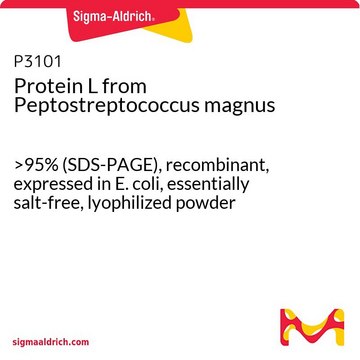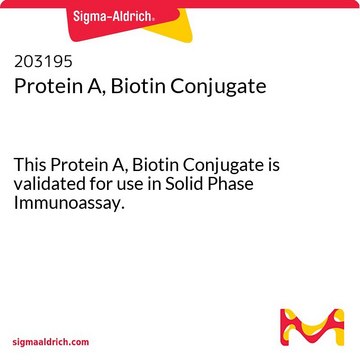P8045
Protein G-Biotin from Streptococcus sp.
recombinant, expressed in unspecified host, lyophilized powder
Sinônimo(s):
Biotinylated Protein G, Protein G Biotin, Protein G-Biotin
About This Item
Produtos recomendados
recombinante
expressed in unspecified host
Nível de qualidade
conjugado
biotin conjugate
forma
lyophilized powder
composição
Protein, ~90% biuret
Extensão da rotulagem
2-4 mol d-biotin per mol protein
técnica(s)
direct ELISA: 1:70,000 using human IgG
temperatura de armazenamento
2-8°C
Descrição geral
Especificidade
Aplicação
Embalagem
Outras notas
Nota de preparo
Exoneração de responsabilidade
Código de classe de armazenamento
11 - Combustible Solids
Classe de risco de água (WGK)
WGK 3
Ponto de fulgor (°F)
Not applicable
Ponto de fulgor (°C)
Not applicable
Equipamento de proteção individual
Eyeshields, Gloves, type N95 (US)
Certificados de análise (COA)
Busque Certificados de análise (COA) digitando o Número do Lote do produto. Os números de lote e remessa podem ser encontrados no rótulo de um produto após a palavra “Lot” ou “Batch”.
Já possui este produto?
Encontre a documentação dos produtos que você adquiriu recentemente na biblioteca de documentos.
Os clientes também visualizaram
Nossa equipe de cientistas tem experiência em todas as áreas de pesquisa, incluindo Life Sciences, ciência de materiais, síntese química, cromatografia, química analítica e muitas outras.
Entre em contato com a assistência técnica












